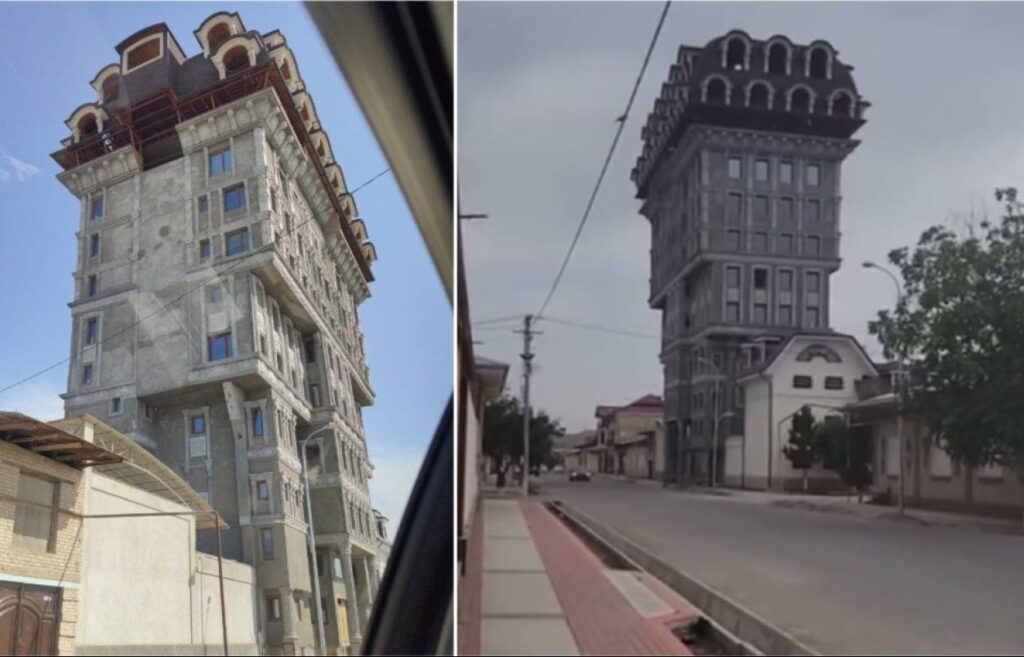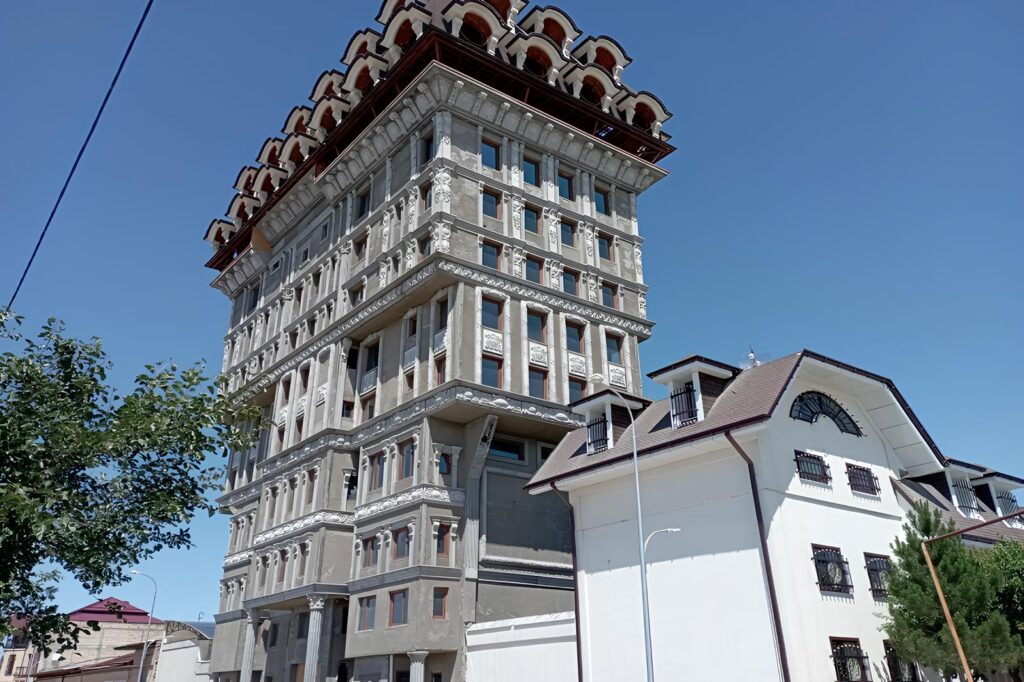Samarkand’s “Monster House”: The Illegal Skyscraper Tourists Can’t Stop Talking About

If you’re planning a trip to Uzbekistan, chances are you’ve already marked the Registan, Shah-i-Zinda and the Silk Road sites on your itinerary. But what if we told you that one of the country’s most bizarre landmarks was a twelve-storey illegal skyscraper towering over a sleepy neighborhood in Samarkand—a building so surreal, locals nicknamed it the «Monster House»?
Welcome to the strange case of the Mahalla Burj Khalifa, a controversial structure that once stood tall, defied the law, split public opinion, and became an offbeat tourist attraction in its own right.
A Local Skyscraper Built Without Permission
Located in Konigil mahalla, a quiet district near the Silk Road Tourist Center and the traditional Meros Paper Factory, the «Monster House» was the work of a local entrepreneur named Furkat Khalilov. Built without building permits or official oversight, construction began in 2012 with an original plan for nine floors. But Khalilov pushed it to 12 storeys, claiming it was designed by Japanese architects.

The result? A 35-meter concrete tower that looked more like a post-apocalyptic fortress than anything remotely legal or livable. It had no cladding, unfinished interiors and an ominous top-heavy design that widened near the upper floors.
But while the authorities saw a code-violating monstrosity, the internet saw something else: an urban legend.
From Eyesore to Urban Curiosity
For more than a decade, this unofficial skyscraper stood proudly, an architectural anomaly in a city renowned for its timeless Islamic monuments and UNESCO World Heritage sites. Travellers who stumbled upon it (and many did, thanks to social media) described it as «Uzbekistan’s strangest building». Its dystopian silhouette even earned comparisons to Tenpenny Tower from the video game Fallout 3.
With no formal address or signage, finding the «Monster House» required effort, making it an exciting adventure for off-the-beaten-path tourists. You’d wind your way through new streets, past empty storefronts and arrive at a concrete beast that felt completely alien amid Samarkand’s low-rise charm.
Tourists vs. Bureaucrats: Should It Stay or Go?
In 2022, a court ordered the demolition of the building, citing structural concerns, seismic instability, and total lack of documentation. A 2025 inspection confirmed the presence of cracks in key support columns, making it unsafe.
Still, the public was torn.
Some residents, and even Russian urbanist blogger Ilya Varlamov, argued that the building should be preserved as a «monument to bad taste and freedom». Social media buzzed with suggestions: turn it into a museum, an art installation, a cautionary tale for future developers, or even a budget hotel with views over the Silk Road complex, the Konigil canal, and historic Samarkand.
Others insisted on demolition, warning that romanticising illegal construction could encourage more unsafe buildings across Uzbekistan’s rapidly modernising cities.
A Lesson for Travellers in the Age of Urban Change
By July 2025, authorities began demolishing Samarkand’s Monster House, carefully dismantling the 12-story structure that had become the city’s most unlikely landmark.
For visitors, it’s a powerful story, a reminder that not all attractions are ancient or state-sanctioned. Some of the most memorable encounters in Central Asia happen where tradition meets rebellion, where old cities wrestle with new ambitions, and where urban landscapes evolve in real time.
How to Explore the Area: Konigil and Beyond
While the «Monster House» may no longer dominate the skyline, the Konigil mahalla remains a great place to explore if you’re seeking authentic Uzbek culture away from the crowds. Stop by the Meros Paper Mill, where artisans continue to craft paper from mulberry bark using centuries-old techniques. Then take a stroll by the Silk Road rowing canal, a growing eco-tourism hub lined with fruit trees, bike paths and quiet streets.
Samarkand isn’t just ancient, it’s also changing. And sometimes, the most fascinating stories aren’t found inside museums, but hidden between alleyways, whispered by locals, or shared on Telegram.
Why the «Monster House» Matters
For curious tourists visiting Uzbekistan, the tale of Samarkand’s illegal skyscraper is more than a quirk; it’s a window into the city in transition.
And while the building may be gone, its story remains one of the most unforgettable chapters of unregulated Uzbek architecture.

